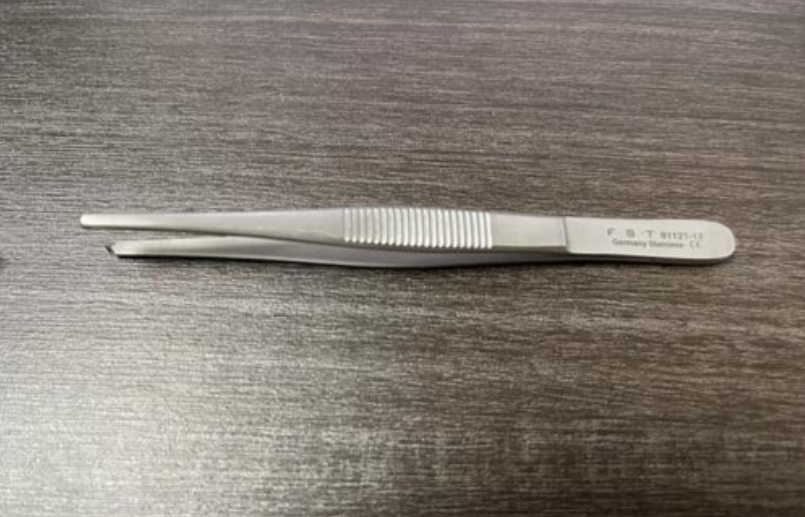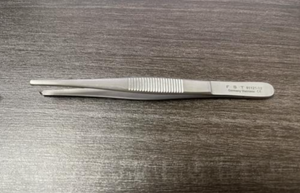
Pliers Inspection Method and Standard Guidelines Inspection and Certification Services for Warehousing and Factory Audits
As a precise clamping tool, forceps are widely used in fields such as electronic repair, medical surgeries, and laboratory operations. Their quality directly affects the operation accuracy, product safety, and process reliability. To ensure that the forceps products meet industry standards and customer requirements, a full-process quality control system from material selection, processing to factory production must be established. This article will systematically introduce the classification, inspection items, inspection standards, and factory inspection review points of forceps, providing professional guidelines for quality inspectors, purchasers, and manufacturers.
I. Classification and Quality Focus of Tweezers
(1) Classification by Material and Usage
Stainless Steel Tweezers: The material composition (such as 304/316 stainless steel), corrosion resistance, and hardness need to be tested.
Anti-static forceps: The surface resistance should be controlled within the range of 10³ – 10¹¹ Ω to prevent electronic components from being damaged.
Bamboo forceps: The key tests include moisture resistance, integrity of the fiber structure, and insulation strength.
Medical forceps: Must comply with medical device standards to ensure sterility and lack of cytotoxicity.
Wafer tweezers: The clamping surface should have an elastic protective layer to prevent damage to the delicate surface.
(2) Classification by structural characteristics
Straight-head / Curved-head / Flat-head forceps: Select based on the usage scenario, and check the clamping force and the symmetry of the head end.
Replaceable head forceps: The connection structure must be stable and maintain accuracy even after replacement.
Ultra-precision forceps (such as optical forceps): The reliability of nanoscale operations needs to be verified.
II. Inspection Standards and Basis for Verification
(1) Main Standards and Specifications
GB/T 27661–2011 Industry Standard for Anti-static Forceps
YY/T 0176–2020 General Technical Requirements for Medical Forceps
ISO 13485 Medical Device Quality Management System (Applicable to Medical Forceps)
IEC 61340-5-1 Electrostatic Protection Standard (Applicable to Anti-static Forceps)
Enterprise technical agreements and special requirements of purchase orders (such as dust-free workshop standards in the electronics industry)
(2) Key Points of Factory Audit
Quality Management System
Whether ISO 9001 certification is available, medical forceps need to undergo an additional review of the ISO 13485 system
Incoming material inspection (IQC) includes material reports and records of static electricity prevention performance tests.
Production process control
Do the processes such as stamping, heat treatment, polishing, and electroplating have operation instructions and inspection records?
Whether the carbon fiber mixing ratio and surface resistance value of the anti-static forceps are monitored throughout the process
Environment and Equipment Management
Does the precision forceps production workshop have the facilities for temperature, humidity and cleanliness control (such as a thousand-level dust-free workshop)?
Check whether the testing equipment (such as resistance meters, hardness testers, microscopes) are regularly calibrated.
III. Finished Product Inspection Items and Methods
1. Appearance Quality Inspection
Surface Treatment: No burrs, scratches, rust stains, and the electroplated layer is uniform without peeling off.
Identification is clear: The laser-engraved or printed contents such as brand, material, and specifications are all correct.
Structural integrity: The tweezer arms have no cracks or deformations, and the hinge points rotate smoothly without any sticking.
2. Dimension and Precision Inspection
Length and Angle: Measured using calipers and projectors. Tolerances must comply with the requirements of the drawings (e.g., ±0.1mm)
Head symmetry: After the two forceps tips close together, there is no misalignment, and the gap is ≤ 0.05mm (precision grade)
Finest surface roughness: Ra value ≤ 0.8 μm (for medical and electronic-grade forceps)
3. Functional Performance Test
Elasticity and Durability: After 5,000 repeated opening and closing operations, the force attenuation rate of the clamping is ≤ 10%
Clamping force test: Use standard weights to verify the minimum clamping weight (e.g., adjustable from 0.1g to 5g)
Anti-static performance: Surface resistance test (10³ – 10¹¹ Ω), Static attenuation time ≤ 2 seconds
Corrosion resistance: No rust after 24 hours of salt spray test (using stainless steel tweezers)
4. Safety and Special Requirements
Biological compatibility of medical forceps: Passed ISO 10993 series tests (such as cytotoxicity, skin irritation)
Magnetic detection: The forceps used for electronic components must meet non-magnetic requirements (magnetic permeability ≤ 1.05)
Cleanliness: The wafer tweezers must undergo a particle shedding test (the number of shed particles per square centimeter should be ≤ 5)
IV. Sampling Plan and Decision Rules
Sampling standard: According to GB/T 2828.1 (or ISO 2859-1), use the general inspection level II
Defect Classification:
Critical Defects: Sharp protrusions, failure of static protection, biological contamination of medical forceps
Main Defects (Major): Insufficient clamping force, dimensional deviation, severe surface scratches
Minor Defects: The labels are slightly blurry and the packaging is not standardized.
AQL Acceptance Criteria:
Serious defect: 0
Main defect: 1.5
Minor defect: 4.0
Quality inspection criteria: Zero tolerance for severe defects. Major and minor defects are judged according to the AQL standard.
V. Packaging, Labeling and Document Requirements Packaging Specifications
The anti-static forceps should be sealed in an anti-static bag, and the medical forceps should be packaged in a sterile manner.
The precision forceps need to be fixed separately to prevent deformation caused by collision during transportation.
Identification and Traceability
The product must be permanently marked with the material, model and production batch.
For each batch of goods, a certificate of conformity, a material report, and a performance test report (such as resistance value and hardness) must be provided.
Document review
During the factory inspection, it is necessary to check the raw material certificates (such as the certificate for stainless steel material), process flow cards, and factory inspection records.
VI. Common Quality Issues and Improvement Suggestions
Typical Defects: Asymmetrical tip of the forceps, unstable anti-static performance, peeling of the electroplated layer
Process control points: It is recommended to establish CTQ control points for heat treatment hardness control, anti-static coating process, and tip polishing station.
Factory inspection improvement direction: Introduce automated optical inspection equipment and establish SPC statistical process control for key dimensions.
Summary
Although forceps are small tools, their precision and reliability directly affect the quality of high-end manufacturing and medical operations. By strictly conducting inspections on materials, dimensions, functions, and safety, combined with a sound factory inspection system and supply chain management, the product qualification rate can be significantly improved. It is recommended that purchasers clearly define technical standards based on application scenarios (such as electronic grade should focus on anti-static performance, and medical grade should pay attention to biocompatibility), and conduct periodic inspections during the production process to ensure that the products meet industry standards and user requirements.
分享这个商品

Pliers Inspection Method and Standard Guidelines Inspection and Certif
As a precision tool, forceps are used in fields such as electronic repair and medical surgeries. Their quality directly affects the operational accuracy
